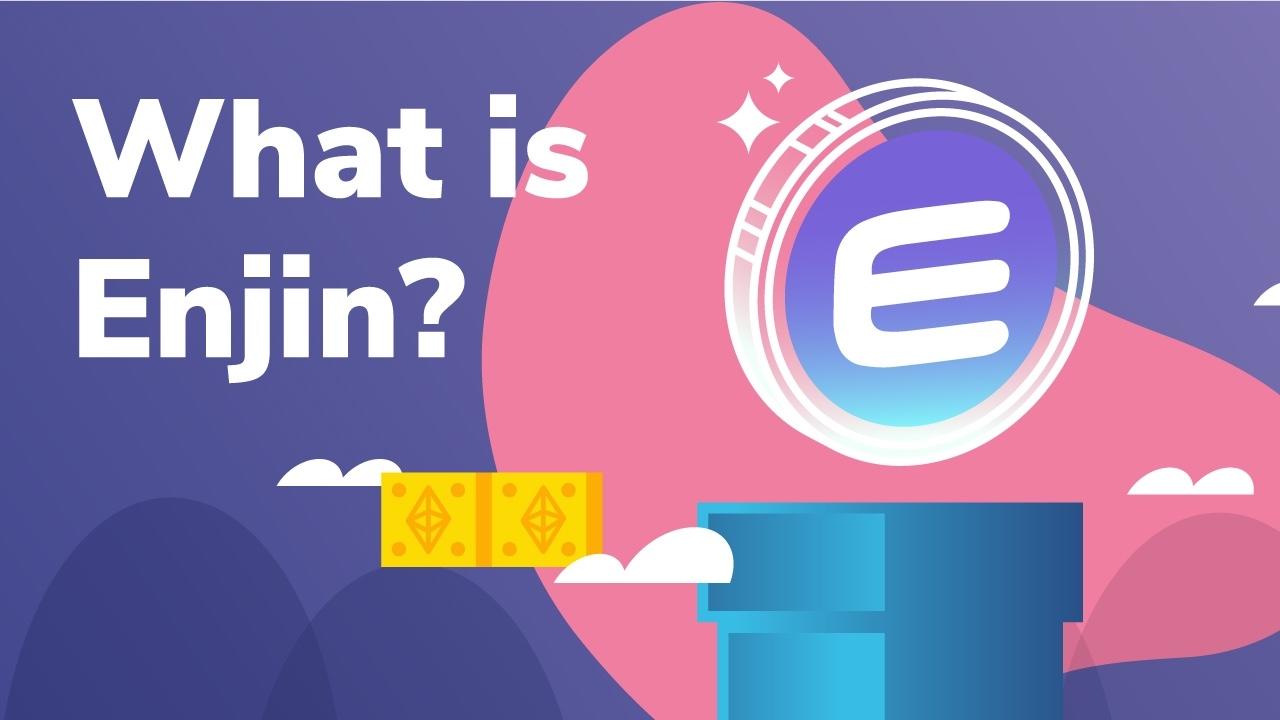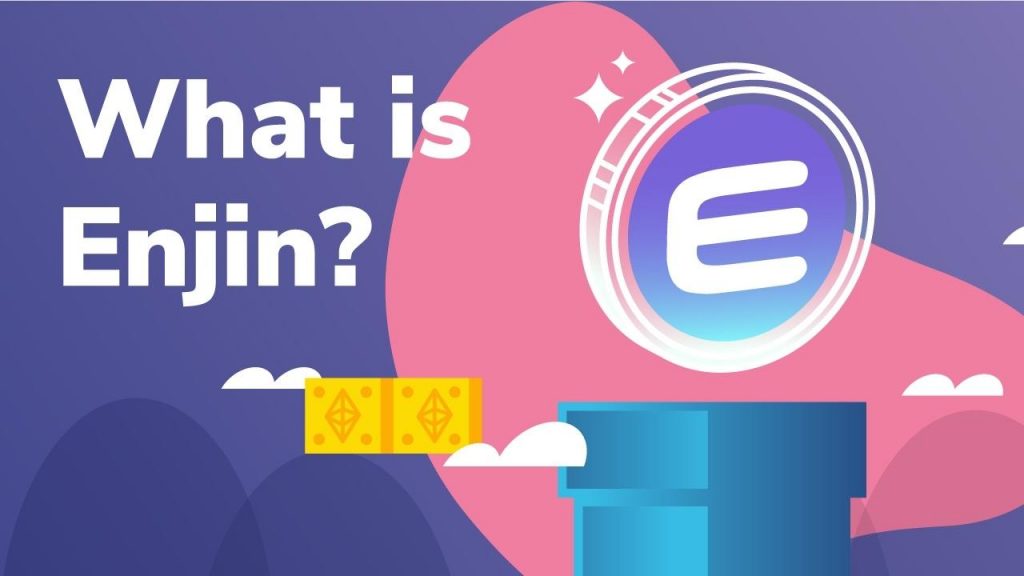
The video game industry is a multi-billion dollar sector, with an estimated 65% of American adults playing games. Moreover, by 2025, the video game market is estimated to become a $300 billion industry by 2025. Out of all of these prospective gamers, the blockchain firm Enjin hopes to lasso some of these gamers from traditional gaming and bring them over to the blockchain.
So, what is Enjin? Well, in short it is a blockchain-based video game community and development platform based out of Singapore. With Enjin, users can build such things as websites, gamer dApps, and chat forums. The Enjin platform is designed specifically for the video game industry and offers its legion of gamers the chance to create communities around their favorite games.
More importantly, Enjin is taking traditional blockchain concepts to the video game space. This means that its users can tokenize virtual assets like weapons or suits of armor. Enjin accomplishes this with its ecosystem of tools that allow people to own their in-game items.
This is important because, in the traditional gaming world, the gaming company gets the final say as to who owns an asset such as a weapon. Moreover, this also means the big companies (like Blizzard for example) retain the power to shut down players’ accounts and deny them access to their game items. This more than sucks for the player who has spent years earning them.

Enjin is changing all of that. It is rewriting the ownership rules when it comes to in-game assets. They believe gamers should own their in-game items (like weapons) and not the game companies. And it has built an entire ecosystem dedicated to providing game devs with the tools they need.
Interested in learning more? There’s a course for that! Ivan on Tech Academy has a course for Enjin Blockchain Game Development!
Explaining Enjin and the ERC-1155 Token
The ERC-1155 token is vital to the Enjin ecosystem. Enjin created it in 2018 to improve upon the ERC-20 and ERC-721 tokens. ERC-1155 is an improvement to these existing tokens in that it combines characteristics of both fungible tokens and non-fungible tokens (NFTs).

Some games (like World of Warcraft) use fungible in-game currency with other magic items that are non-fungible. ERC-1155 enables the issuance of both fungible and NFTs, something which is crucial to game devs looking to implement such crypto assets.
What is Enjin Coin (ENJ)?
Enjin Coin, or ENJ, is an ERC-20 token with widespread support. It can be found on exchanges like Binance and can be stored in any ERC-20-compatible wallet. Moreover, it also supports ERC-1155 smart contracts. ENJ has a total supply of 1 billion but it is not mined – instead, it is minted and melted.
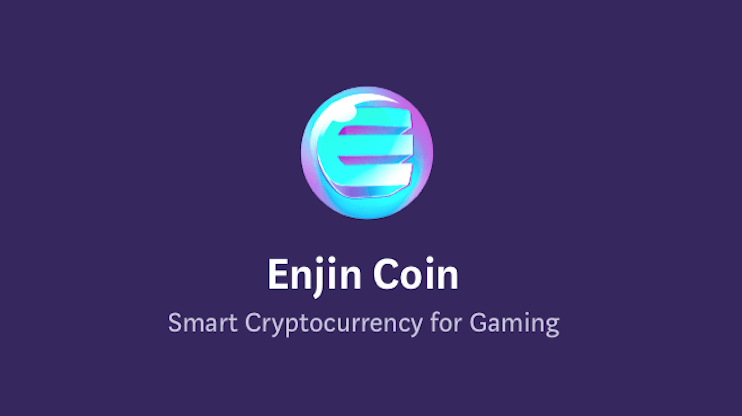
Minting just means that ENJ is infused with gaming items turning them into ERC-1155 assets. In-game assets like currencies, weapons, spaceships, characters, and planets, can all be minted. Developers can even mint an entire game if they want to.
Enjin Explained – Minting and Melting
So, game developers can use ENJ to pay for their gaming items which can be either fungible or non-fungible items. Each item contains a specific amount of ENJ that users can later retrieve by melting them. Thus gamers interested in obtaining more ENJ can do so by “melting” their ENJ-based virtual items.
Melting is not the best scenario, however, as it usually occurs because a game has gone dead. When this happens, the intrinsic value of the item is less than its ENJ value as the item has no utility. However, it could be argued that items such as these could become collectibles in the future.
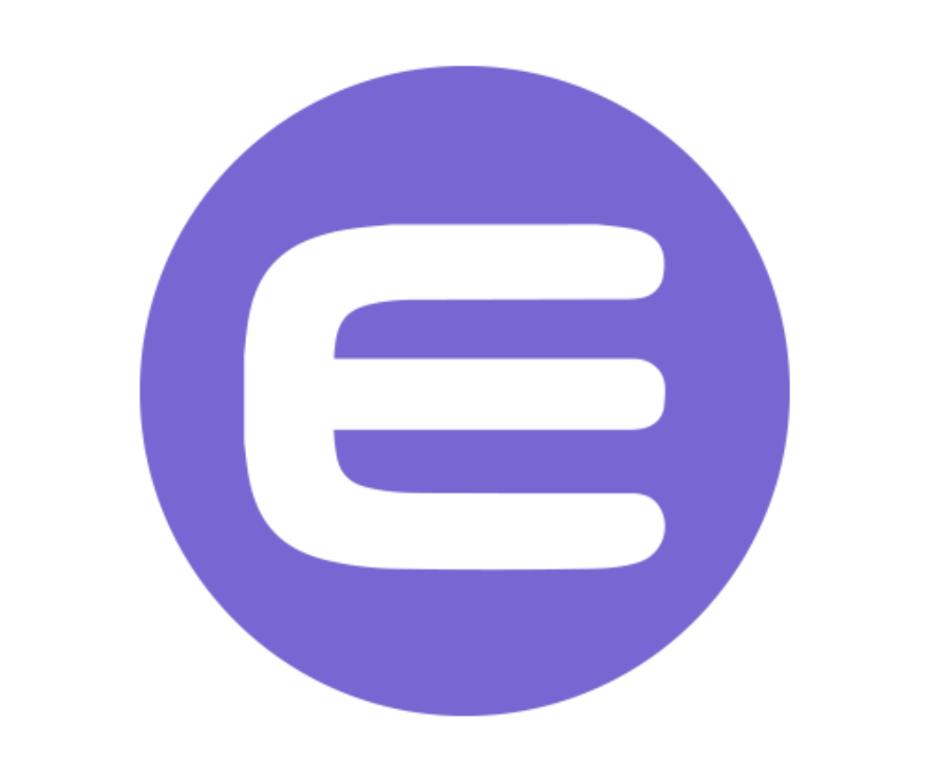
So, the ability to melt is like an insurance policy to incentivize players to purchase in-game items. It provides players with the assurance that their purchases will at least hold some future value.
As for the melting payout, the percentage depends on the game dev who minted the item. However, it can never be less than 50%. That means if a player melts a virtual, Bronze Age sword that was minted with 2 ENJ, the player would get 1 ENJ and the developer would get the other 1 ENJ.
Other Use Cases for ENJ
Users can buy items from in-game stores with ENJ or use them for individual trading with other gamers. Players can also receive ENJ as rewards for completing game levels. Examples of in-game rewards can include such things as completing a task or a quest or for referring a friend.
Game servers don’t store these virtual items as one might expect coming from the traditional gaming space. Instead, they are held in the private Enjin wallets. Gamers must also distinguish between an item’s intrinsic value and its ENJ value. A virtual weapon might only have $5 worth of ENJ backing it. But, depending on its rarity, its utility, and who its creator was, it could be worth thousands of times more than that.
Enjin Explained
The Enjin platform is a suite of tools and services that game devs can use. The platform focuses on blockchain development. It helps game devs raise funds by selling pre-released items. By tokenizing valuable items like rare weapons, they can raise the necessary funds to finish their projects.
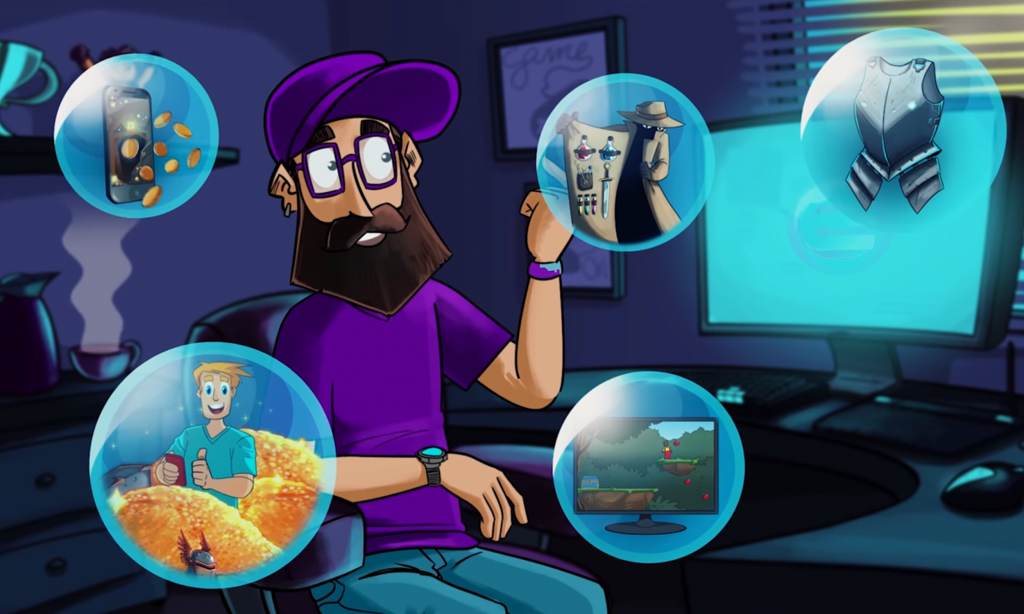
The Enjin platform also helps devs monetize their games by charging transfer fees whenever in-game items are sold on the marketplace. This is great for devs.
Beating the Black and Gray Markets
One of the problems in the gamer space is the middlemen who profit off the buying and selling of in-game items on the black and gray market. They’ve been raking in the cash instead of the devs. That means game devs can lose up to 40% of their revenue thanks to gray marketplace trading.
The Enjin platform ensures that the devs get their cut of the sales. And they give them the tools they need so that in-game assets can travel between players, and to players of other games. Devs can build gaming multiverses where players can join different games but still bring their items along with them. This is all a way of helping the devs grow their community.
Enjin Explained – The Founders Tokens
Enjin also offers what’s known Founders Tokens. These tokens prove its holder was a founder and early adopters. This can serve as a badge of honor and a way to grant bragging rights to those with the foresight of discovering a game and becoming established in the community before the rest of the mob.
Developers can also send perpetual rewards to these founders directly to their public blockchain addresses. It’s a great way to reward and recognize prized community members.
What is the Enjin Wallet?
The Enjin wallet is simple and fast. It can store and send ERC-721, ERC-1155, and ERC-20 tokens. But it also supports Bitcoin and other major cryptocurrencies. The Enjin wallet can access other elements of the Enjin ecosystem, such as scanning Enjin Beam QR codes.
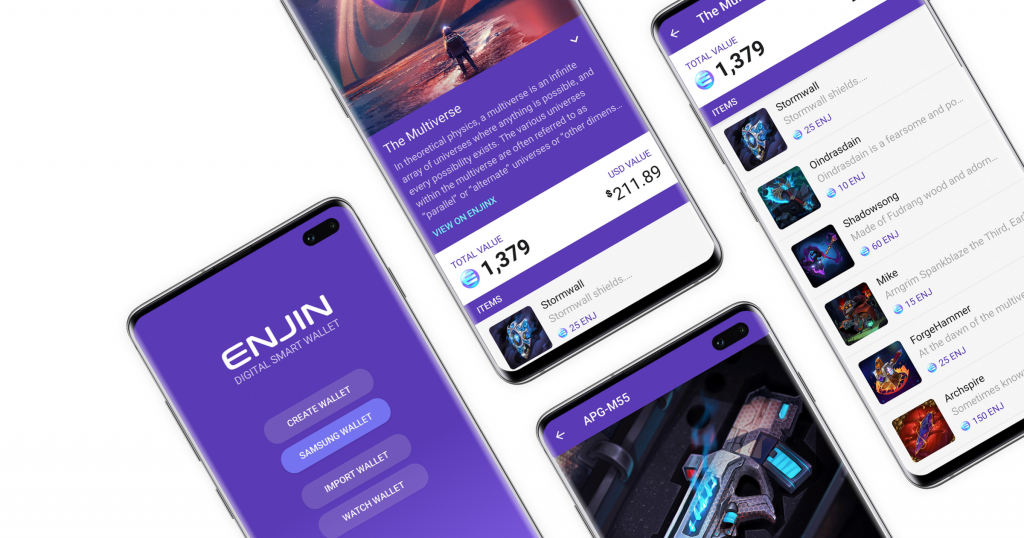
Enjin Beam is built directly into the Enjin wallet which devs can use to hold giveaways for sought after in-game assets. This can help build audience engagement. To access it, users scan an Enjin Beam QR code with the Enjin Wallet. This enables them to receive ERC-1155 assets into their wallets.
Enjin Explained – The Marketplace
The site enjinx.io is the place to visit for those shopping for ERC-1155 assets like weapons or a new suit of armor. Users can search listed items and the wallet addresses that hold historic transfers, recent activity, and more. When ready to buy, they just scan the QR code with their phone app. The process is simple.
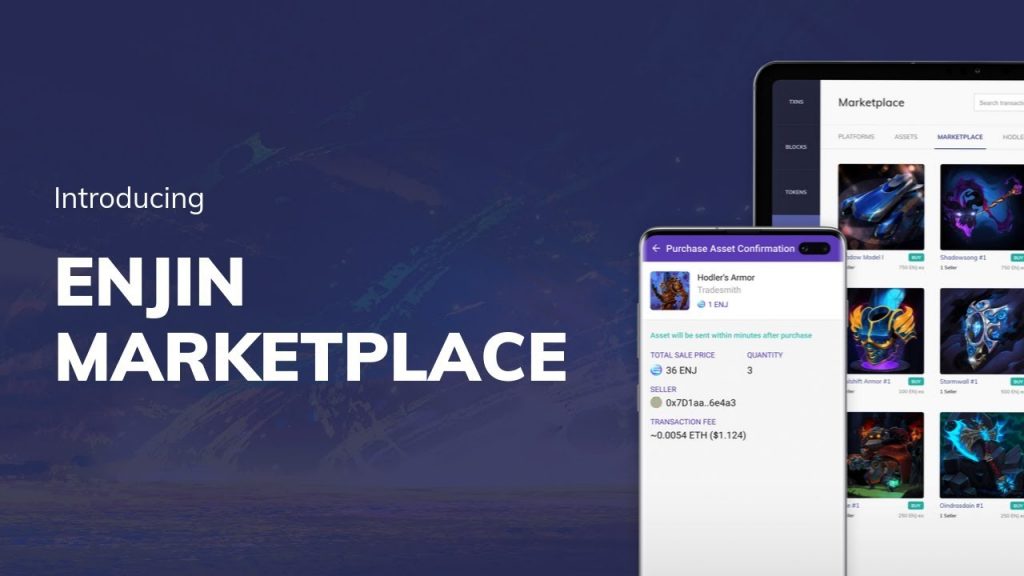
To sell digital items in the marketplace users just list them. There they can join in with the thousands of other items already listed. The marketplace integrates with the Enjin wallet. And users can trade items in the marketplace for games that aren’t even released yet.
What is Enjin’s Efinity Solution?
Efinity is Enjin’s upcoming Ethereum scaling solution. Scaling is an issue because with Enjin residing on the Ethereum blockchain and powering thousands of games, millions of game asset transfers will be occurring. Ethereum’s Vitalik Buterin is predicting 100,000 transactions per second as 2.0 kicks in, but presently, it’s nowhere near fast enough for Enjin.

Vitalik Buterin
And with things like DeFi pumping up the transaction load, gas prices can skyrocket to the point where in-game transactions become economically unfeasible. But with Efinity, users can open up a game channel that will be able to perform an infinite amount of transactions between millions of players at high speeds.
Another of Efinity’s features will be token bundles. This means compound items can be crafted and bundled. For instance, a Bronze-Age sword could be put together with five separate pieces of virtual metal. And fractions of ENJ could back up each piece of it. If 0.2 ENJ backed each piece of the sword, the grand total would be 1 ENJ.
Potential Problems with Enjin
Enjin has already had many successes. Back in 2019, they partnered with Samsung to integrate their technology into the Galaxy S10 models in South Korea. Enjin has also partnered with Unity, NRG eSports, and others. The media buzz surrounding these events sent the price skyrocketing which was good for ENJ hodlers – and all systems appear to be a go. However, there are a few issues that could hold Enjin back.
What is Enjin’s Infinite Scalability Solution?
Enjin wants infinite scalability for Efinity. But this parallel system will have to work with an item on the blockchain and its copies off-chain. Hopefully, this system can merge with the blockchain, because if it doesn’t, Enjin will have a tough time on-boarding larger game developers to their platform.
Also, we’re still in the early phases of blockchain gaming. There aren’t that many games in this space comparatively and there is still a long way to go. And, there are no guarantees that experienced game devs will want to switch over to the blockchain.
Early adopters seem keen to try out the new technology, but it may be a tough sell to get the established devs to cross the divide. Concerns about losing players may hamper them since the blockchain can appear complex to the uninitiated and that may slow wider adoption.
What is Enjin’s Potential?
Overall, Enjin has the potential to increase crypto adoption via the gaming community. The novelty being, as we’ve explained, is that gamers get personal ownership over their digital assets. They get to both own and trade the game items. Best of all, they don’t need permission from the owner of a walled garden. It’s a far cry from the traditional gaming space. And new devs can create games without knowing a single line of blockchain code.
Enjin also partnered with Aave recently to bring DeFi to gaming. This deal helps gamers increase their ENJ earnings through the Aave protocol.

Enjin Explained – Reimagining the Gaming Space
Enjin reimagines new ways for devs to design games and fund game development. So, the potential is huge for those interested in the crypto gaming industry. They are working to tie up all the loose ends and mesh it together into one ecosystem that’s easy for those who aren’t experienced in blockchain mechanics to figure out.
And it provides a fun and profitable way for people to buy pre-released game items and trade them. Gamers can even earn items and sell the ones they don’t need whilst in the act of playing.
As we mentioned, early adopters and innovative game devs are now testing out the technology in unique ways. Even to the extent of how the marketplace can influence game economies. They are figuring out what the blockchain can do in the context of gaming and it will be interesting to see what they come up with.
What is Enjin’s Future?
Reports show that in the US alone, 75% of the households have at least one gamer in it. And if Enjin can bring just some of these over it will introduce a multitude of players to the blockchain.
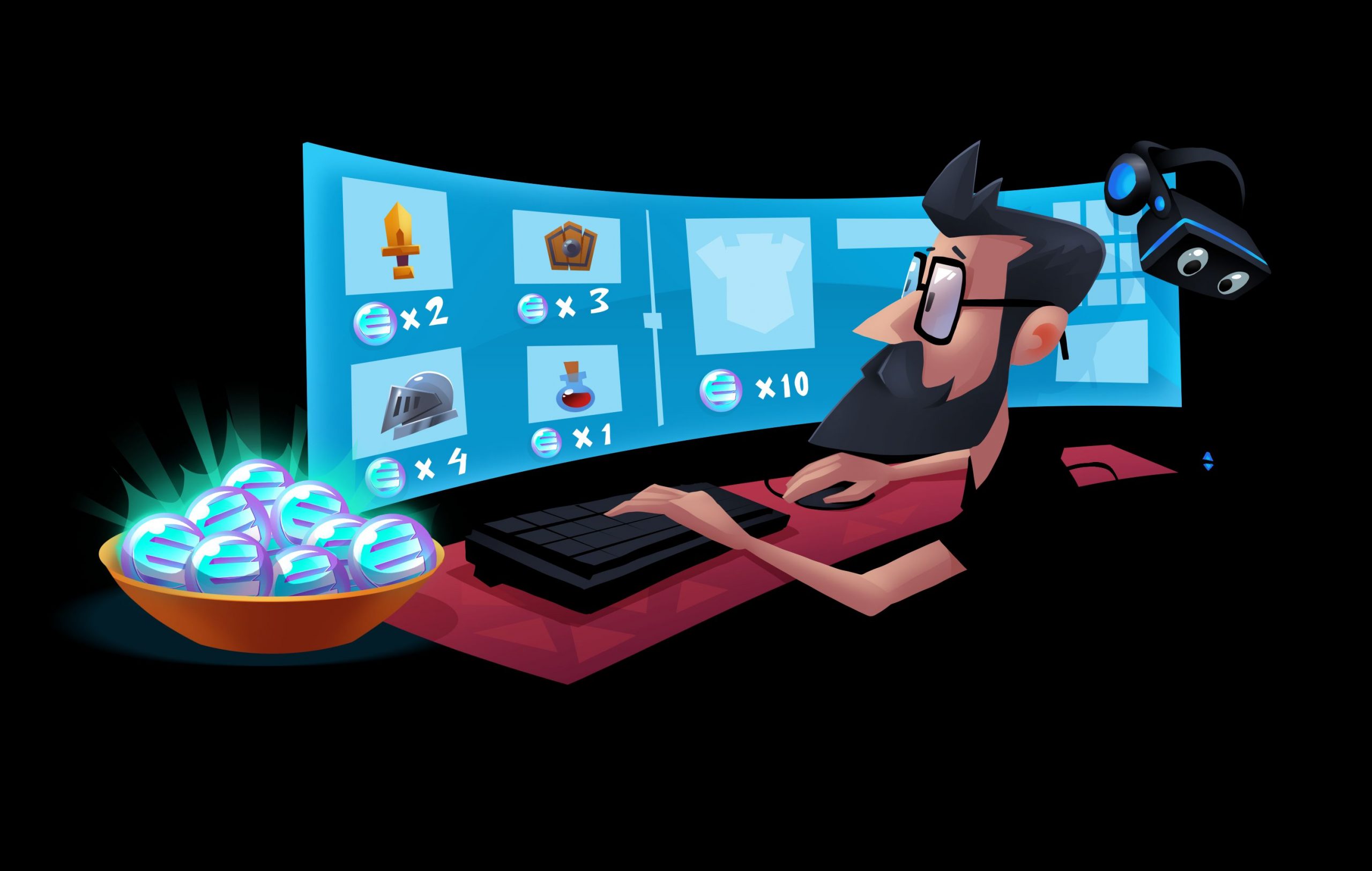
Tokenizing virtual assets and granting gamers ownership to freely trade them is an excellent idea. Even though blockchain is still a long way from mainstream adoption, Enjin is simplifying the process with SDKs and extensive documentation for devs to follow. This is critical for mass adoption to take place and for inexperienced blockchain players to learn how to work within its ecosystem.
So, what is Enjin’s future? Well, it has the potential to onboard more users into the crypto space. Sure, we won’t know for a while whether or not video game adoption on the blockchain will make a significant impact in that regard. But with the millions of gamers around the world, the potential is there to unleash a new wave of crypto adoption.
If you want to have Enjin explained in depth, visit Ivan on Tech Academy today and get the best blockchain education available anywhere. What’s more, Ivan on Tech Academy offers courses for anyone interested in either blockchain technology, learning programming, understanding cryptocurrencies or DeFi. Check out our countless blockchain courses!
Author: MindFrac
